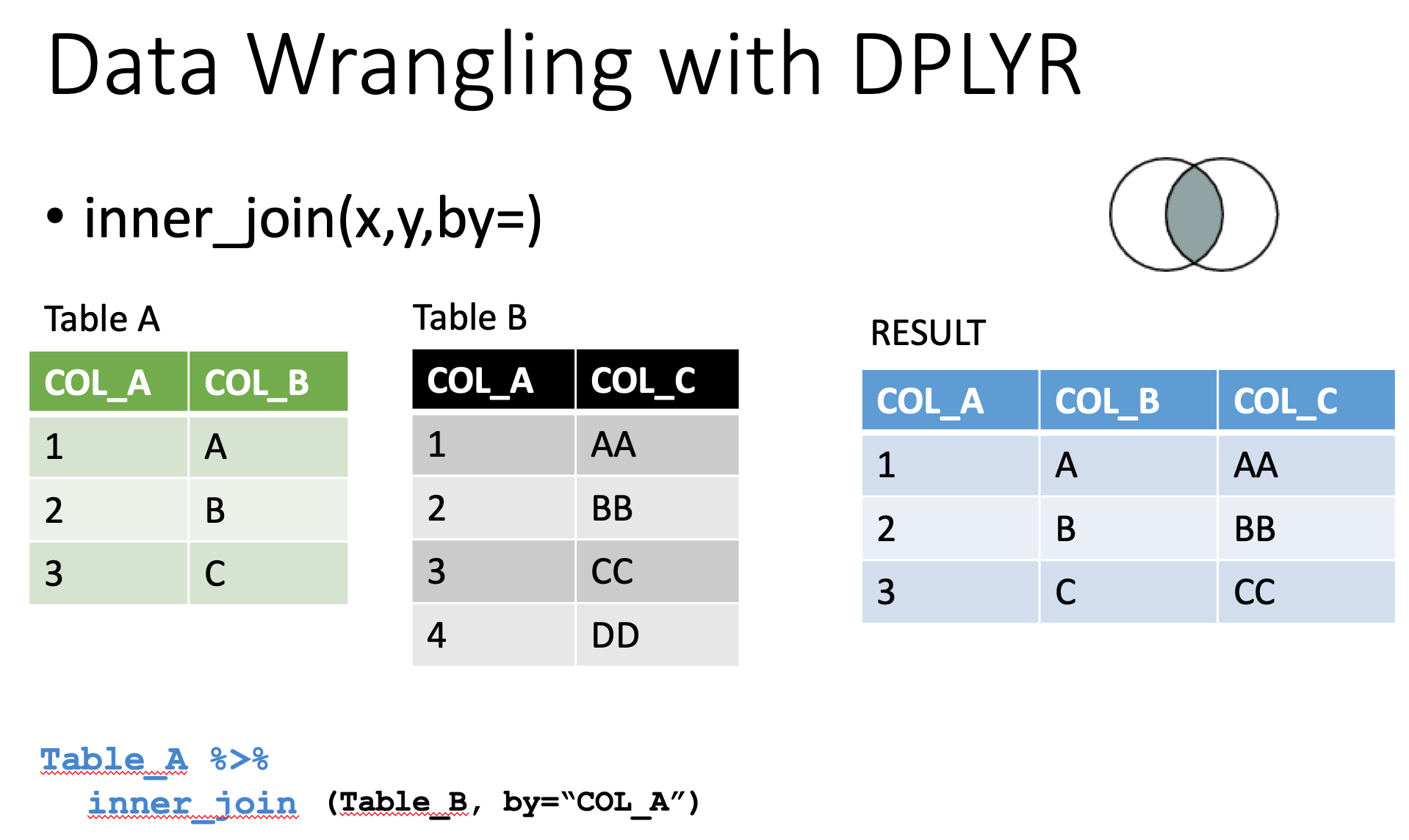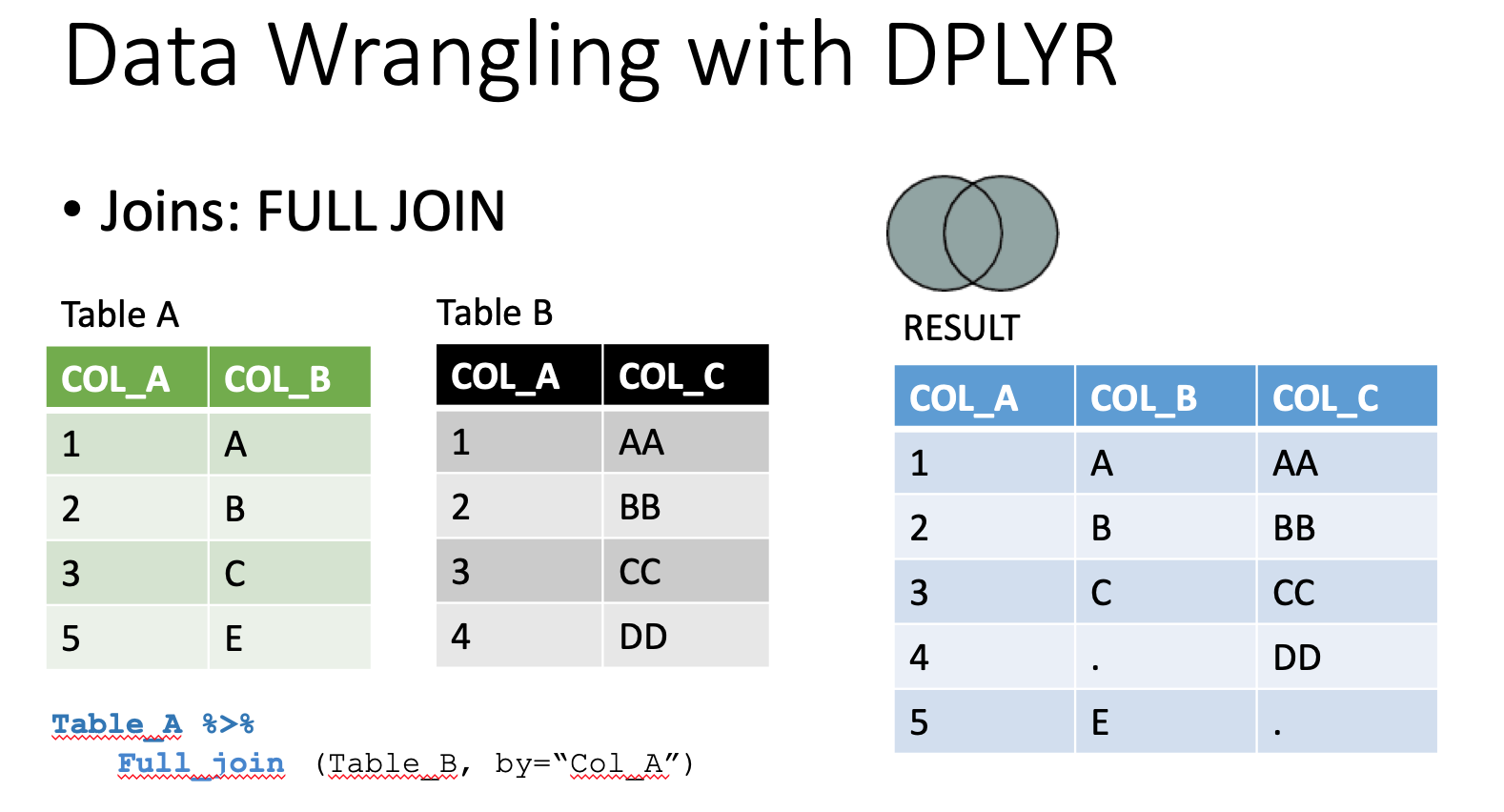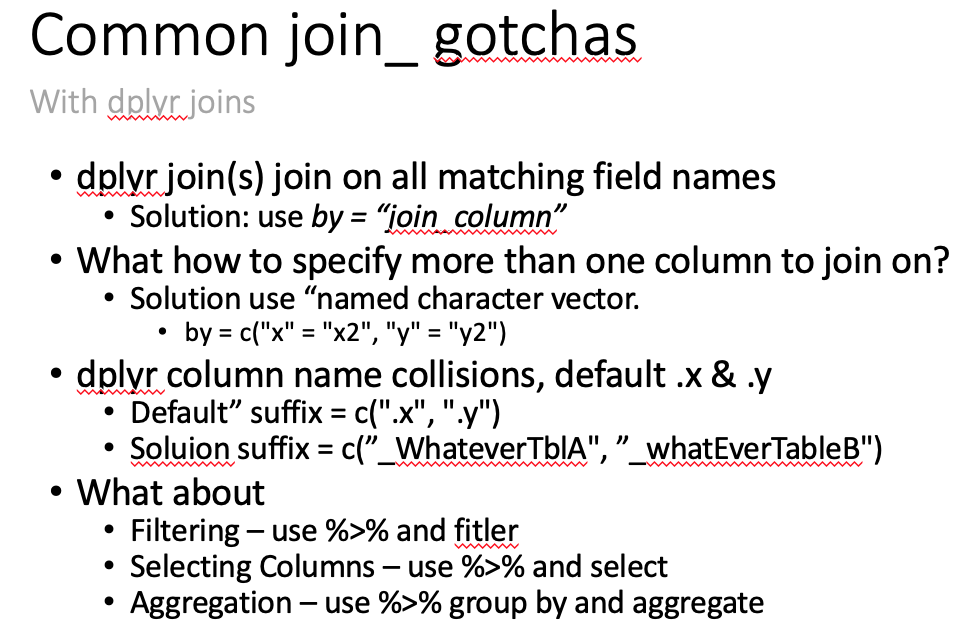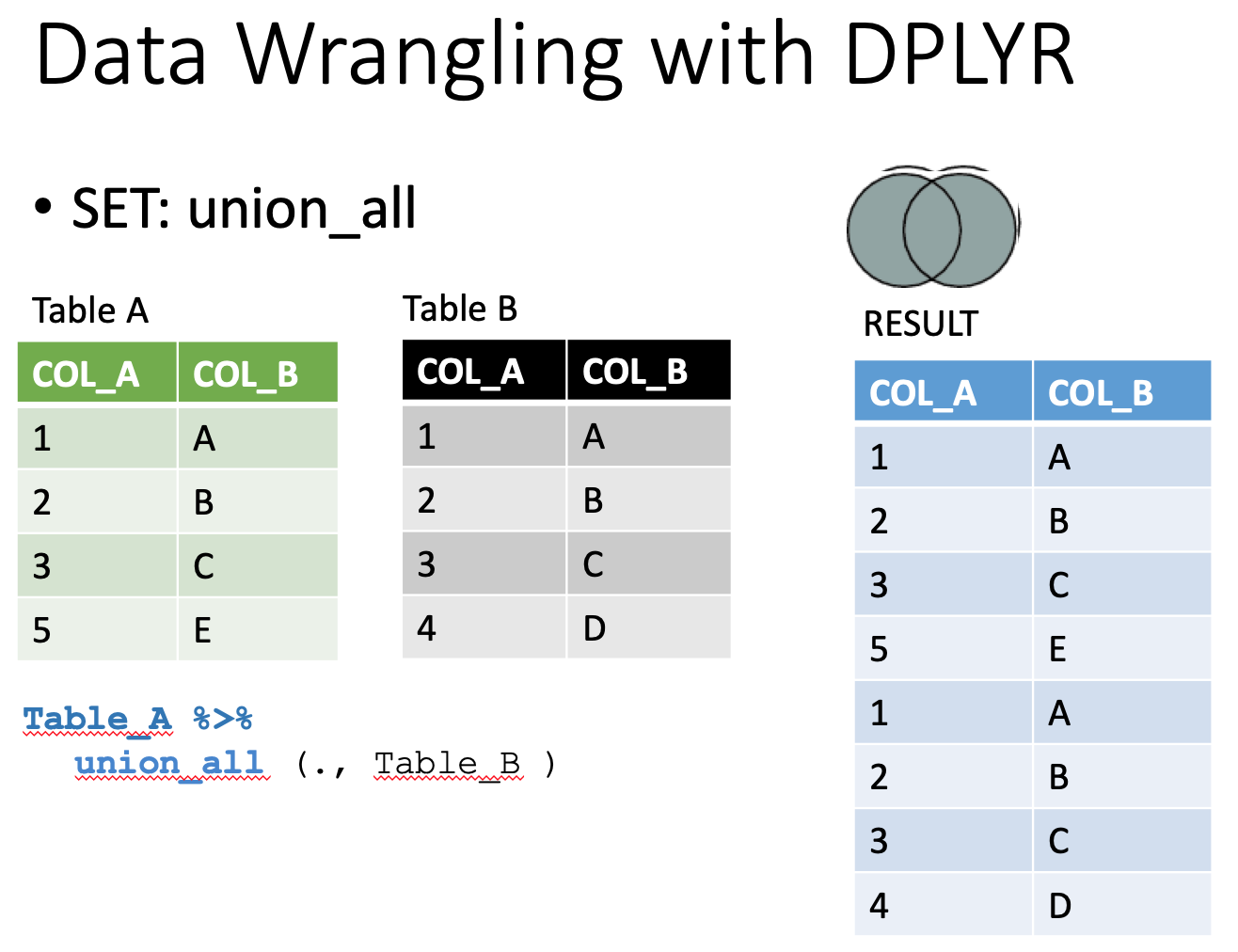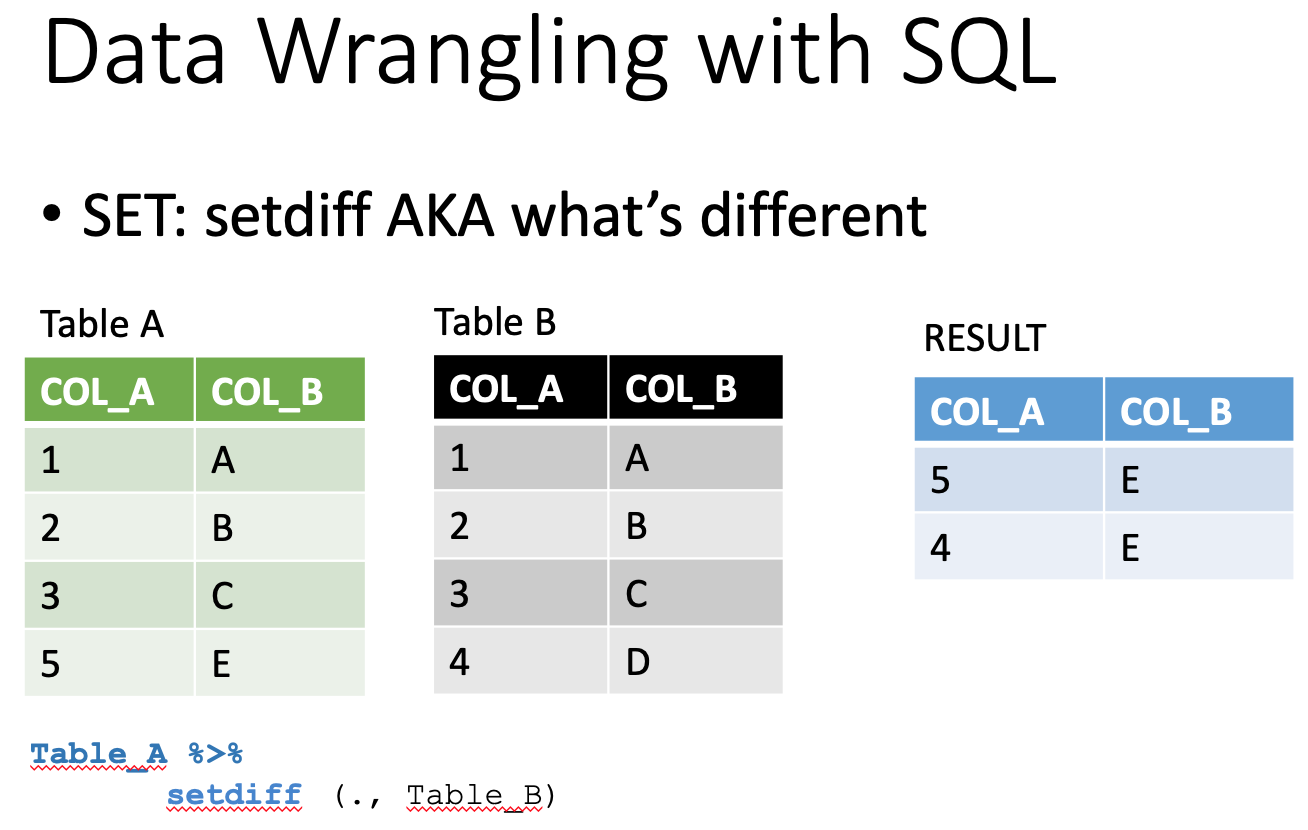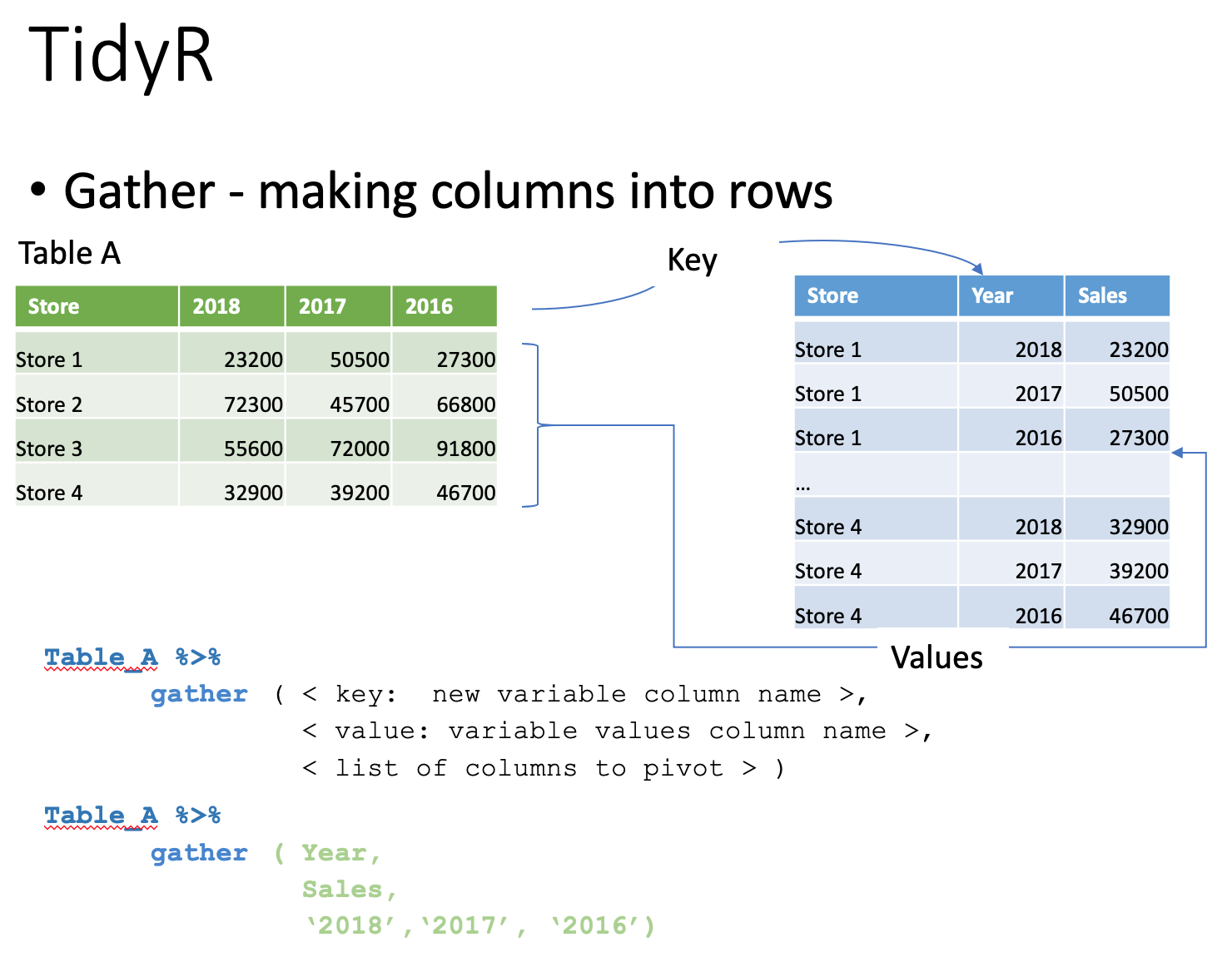We’ve been studying R for two weeks now, and so far we have studied the basics – analyzing the data with simple plotting- creating histogram, scatter plot.
And now this week is data wrangling 2.0 with R, where we’ll be taking a step further into wrangling and look at data structuring where we will be using more techniques like joining, transposing to analyze the data better.
First we looked at how to filter NAs, how to convert a character into a numeric data, convert date integer/character format into Date format using lubridate package, which is a R package that basically makes it easier to process any date related tasks.
In today’s blog, I’ll just make a note of some of these techniques that I thought would be most helpful.
-
Data wrangling with DPLYR
inner join
full join
bind rows and bind column
union all
union
-
Data wrangling with SQL
- SetDiff
-
Data wrangling with Tidy R
gather
spread
JOINs statement in R are very similar to PROC SQL in SAS, but I found writing Join statement in R much easier and straight forward.
The most used technique of joining two datasets is using the function inner join which returns all observations in table_A and table_B, where the keys are equal, which is defined in the by statement. If we don’t specify the columns that we want to join by, by default, it will take the column names that match.
Full join is another useful technique where it selects all matching and non-matching rows, and brings the records from all of the tables. I think this will be very useful when we are trying to find things that don’t match up.
But what happens when we don’t have matching columns? We just use DPLYR and specify a vector in the by statement:
by = c(“x” = “x2”, “y” = “y2”)
Here, x will be coming from Table 1, and x2 will be coming from Table 2. They don’t have to be the same name, but they have to be the same type.
The other thing we learned is how to append rows together and bind columns by using functions bind_rows and bind_cols. They are pretty similar in terms of what they do. Bind rows just appends the tables together, and bind columns just puts the two tables together without the join. It may look like it joins the tables, but it’s not matching the keys. Also, in bind column, it just looks at the first column of first table. So in the example below, bind column just takes the observation data in COL_A of Table A.
So, the next function that is similar to bind_rows is union_all. Union also bind rows, but it doesn’t do sort, so we’ll just end up with a record once Table A and Table B are put together.
There’s another function union which is similar to union_all, where it appends the records with a sort distinct and returns the unique set of rows from Table A and B
One of the other things that I think would be very helpful is SetDiff as it returns the rows that don’t match. There are times when we want to see what didn’t match, so in those cases SetDiff would be super helpful.
We also learnt about data tidying, which is similar to transpose but a lot more powerful, where we have
gather which allows us to take multiple columns and gathers them into key-value pairs and flips them into rows
spread which takes two columns (key & value) and spreads in to multiple columns and makes rows into columns
Reuse
Citation
@misc{shrestha2019,
author = {Mohit Shrestha},
title = {Data {Wrangling} 2.0 with {R}},
date = {2019-07-29},
url = {https://www.mohitshrestha.com.np/posts/2019-07-29-data-wrangling-2-0-with-r},
langid = {en}
}

